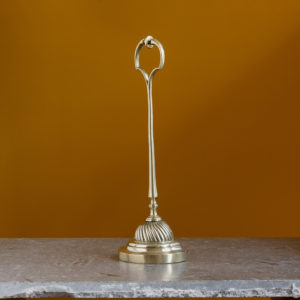285 items found
Page 2 of 3
-
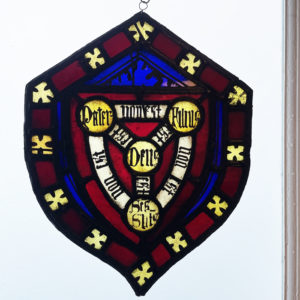
The Trinity Shield, a leaded stained glass hanger,
£415The Trinity Shield, a leaded stained glass hanger,
a shield shaped light centred with the pictogram of the Holy Trinity, the central shield centred with a "Deus" with "Est" bars linking to "Pater", "Filius" and "Sis Sits" (Spiritus Sanctus), "Non Est" linking the outer three, on a claret and indigo ground - the highlights in cadmium, hung from wire loops,£415 -
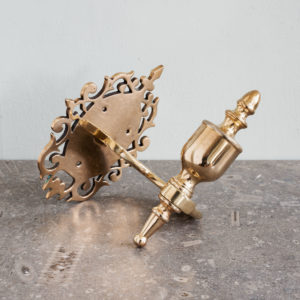
Nineteenth century brass chimneypiece jamb hook
£400Nineteenth century brass chimneypiece jamb hook
with urn finial and elaborately shaped wall-plate.£400 -
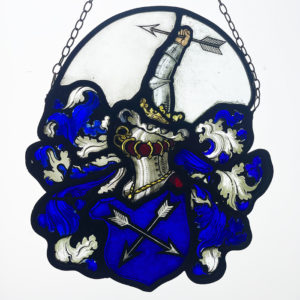
A Victorian leaded stained glass heraldic hanger
£395A Victorian leaded stained glass heraldic hanger
the etched and stained glass fragment, re-leaded, depicting an helm surmounted with a fletcher's arm grasping an arrow, surrounded with rippling indigo rocaille-work, above a shield of crossed arrows, chain hung from wire loops,£395 -
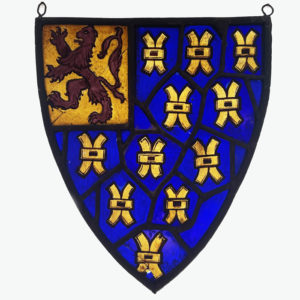
An armorial leaded and stained glass hanger,
£375An armorial leaded and stained glass hanger,
a shield shaped light, the top quarter with a lion rampant, with a field of gold devices on blue, hung from wire loops£375 -

An armorial leaded and stained glass hanger,
£375An armorial leaded and stained glass hanger,
a shield shaped light, a bar with three gold stars to the top, a white chevron with three Maltese crosses and a trio of lion heads on a claret field, hung from wire loops£375 -
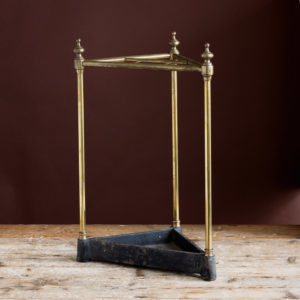
Victorian brass and iron umbrella stand
£375Victorian brass and iron umbrella stand
intended for use in a corner, with brass finials, c.1890£375 -
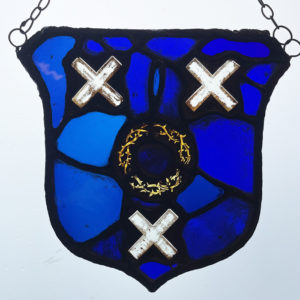
An armorial leaded and stained glass hanger,
£355An armorial leaded and stained glass hanger,
a shield shaped light with a trio of Crux Decussata centred with a delicately painted crown of thorns on a blue ground, hung from wire loops£355 -
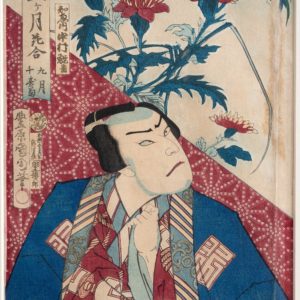
“Twelve Months of Flowers September Senju Chrysanthemum “Chienai Nakamura Suzaku”by Toyohara Kunichika
£350 -
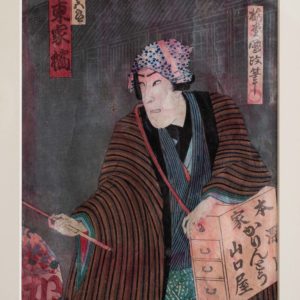
Bandō Kakitsu I, an actor by Baido Kunimasa
£350Bandō Kakitsu I, an actor by Baido Kunimasa
R/H section of a triptych depicting the actor Bandō Kakitsu I playing a karinto merchant in the play Chitose-za shin kyogen Tsuki shiraha bonji horimono.£350 -
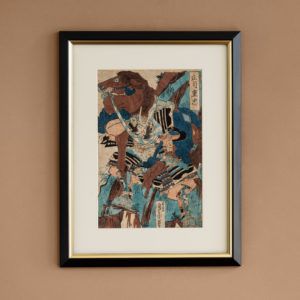
Samurai Warlord, Hatakeyama Shigetada by Utagawa Kunimune
£350Samurai Warlord, Hatakeyama Shigetada by Utagawa Kunimune
Hatakeyama Shigetada, was a warrior of the early Kamakura Period (1185-1333) famed for his virtue and bravery.£350 -
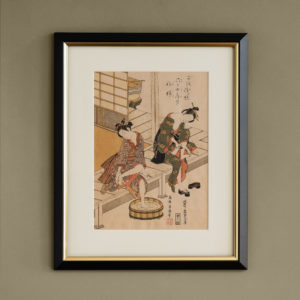
Pedicure by Torii Kiyohiro
£350Pedicure by Torii Kiyohiro
Produced by of the leading artists of the era of two-colour 'benizurie' prints, where the works are printed in pink (beni) and green, a style that peaked in the early 1740s.£350 -
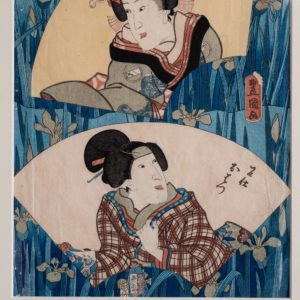
Yaoya oshichi meshitsukai o Hatsu by Utagawa Kunisada
£350Yaoya oshichi meshitsukai o Hatsu by Utagawa Kunisada
Yaoya Oshichi was a daughter of the greengrocer Tarobei, who lived in the Hongō neighborhood of Edo at the beginning of the Edo period. She was burned at the stake for attempting to commit arson. The story became the subject of joruri puppet plays.£350 -
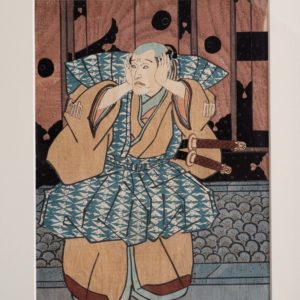
An actor from Chushingura by Utagawa Kunisada
£350An actor from Chushingura by Utagawa Kunisada
Chushingura, was Japan’s most popular kabuki play, with its origins in an event of organized mob violence in 1702, its a complex story of unquestioning loyalty, revenge, conflict, love, and punishment.£350 -
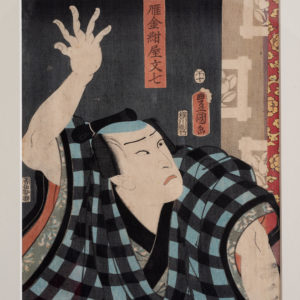
Kataoka Nizaemon VIII as Karigane Kon’ya Bunshichi by Utagawa Kunisada I (Toyokuni III)
£350Kataoka Nizaemon VIII as Karigane Kon’ya Bunshichi by Utagawa Kunisada I (Toyokuni III)
This print originally formed the R/H side from a triptych of the play, Eiyû Koko ni Yorimasa£350 -
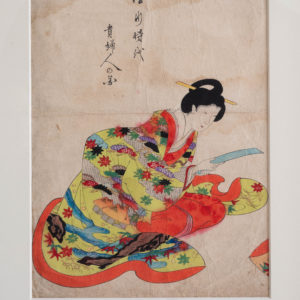
A girl reading poetry by Toyohara Chikanobu
£350A girl reading poetry by Toyohara Chikanobu
This print originally formed the R/H side of a triptych.£350 -
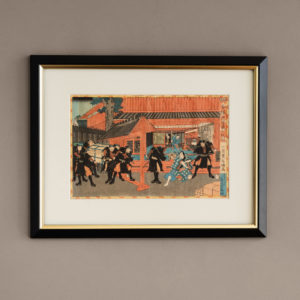
A scene from ’47 Ronin’ a Japanese Samurai Tale, 1852, after Utagawa Fusatane (active 1854-1889)
£350A scene from ’47 Ronin’ a Japanese Samurai Tale, 1852, after Utagawa Fusatane (active 1854-1889)
This print vividly depicts the famous night attack of 47 ronin, or masterless samurai, on the house of Moronao.£350 -

An unusual wooden parcel-gilt and painted tazza bowl on plinth
£320An unusual wooden parcel-gilt and painted tazza bowl on plinth
the turned tazza with stippled blue paint finish in simulation of lapis lazuli, the stepped base gilded and painted black,£320 -
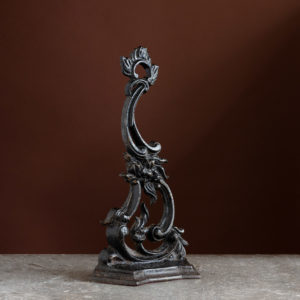
Victorian ‘A.Kenrick & Sons’ cast iron door porter,
£300 -
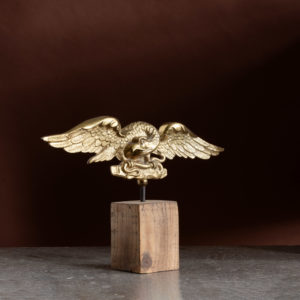
Early nineteenth century brass spread eagle,
£300Early nineteenth century brass spread eagle,
the well cast spread eagle perched upon a rocky outcrop with a snake in its talons. The eagle was possible from an Empire period standard, the eagle was an iconic symbol used during the Napoleonic period£300 -
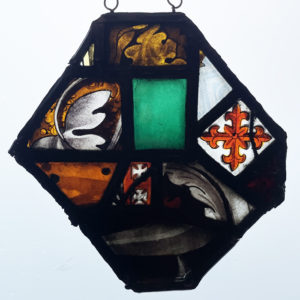
An English leaded stained glass hanger,
£290An English leaded stained glass hanger,
a polygonal light incorporating old fragments (some probably medieval): with Maltese crosses and foliate fragments, chain hung from wire loops,£290 -
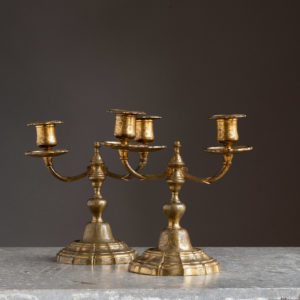
Pair of nineteenth century gilt-brass candlesticks
£280 the pairPair of nineteenth century gilt-brass candlesticks
with engraved decoration, with removable nozzles.£280 the pair -

An armorial leaded and stained glass hanger,
£275An armorial leaded and stained glass hanger,
the round pane, a shield device within, the quartered field with gold 'frets' on worn blue background, gold Bishops' mitres to the red border, facing lead restorations, wire eye to the top for hanging,£275 -
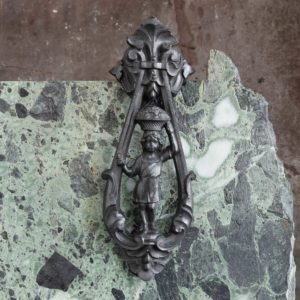
Cast iron nineteenth century door knocker,
£260Cast iron nineteenth century door knocker,
The well cast nineteenth century door knocker, comprising of a lozenge shaped fixing plate with locking stud. The knocker section surmounted with scrolls and leaf details, centred by a personification of Autumn standing on further leaf and scroll details. An indecipherable registration mark to the reverse.£260 -
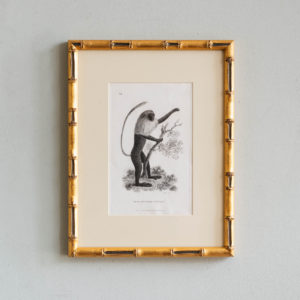
Monkeys – Full-Bottom Monkey,
£260 EachMonkeys – Full-Bottom Monkey,
The English Encyclopaedia was published in 1802 by George Kearsley and it gave an unusual insight into early 19th century new discoveries in zoology.£260 Each -
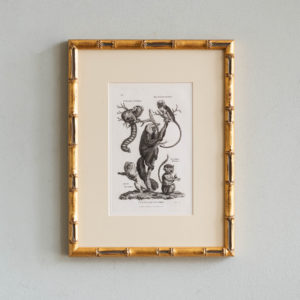
Monkeys – Striated Monkey, Red Tailed-Monkey,
£260 EachMonkeys – Striated Monkey, Red Tailed-Monkey,
The English Encyclopaedia was published in 1802 by George Kearsley and it gave an unusual insight into early 19th century new discoveries in zoology.£260 Each -
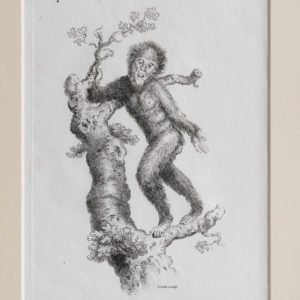
Monkeys – Oran Otan
£260 EachMonkeys – Oran Otan
The English Encyclopaedia was published in 1802 by George Kearsley and it gave an unusual insight into early 19th century new discoveries in zoology.£260 Each -
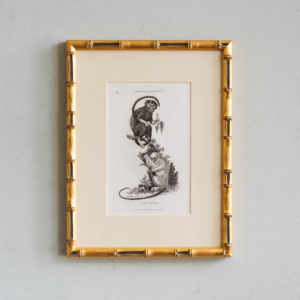
Monkeys – Great-Eared Monkey, and Fair Monkey,
£260 EachMonkeys – Great-Eared Monkey, and Fair Monkey,
The English Encyclopaedia was published in 1802 by George Kearsley and it gave an unusual insight into early 19th century new discoveries in zoology.£260 Each -
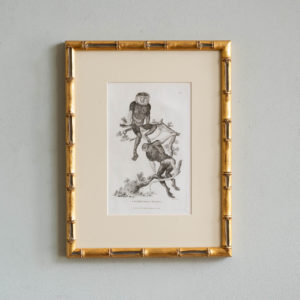
Monkeys – Cochinchina Monkey,
£260 EachMonkeys – Cochinchina Monkey,
The English Encyclopaedia was published in 1802 by George Kearsley and it gave an unusual insight into early 19th century new discoveries in zoology.£260 Each -
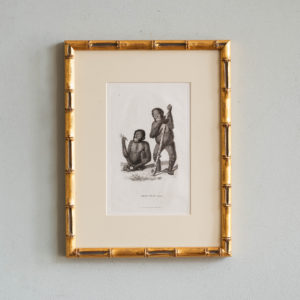
Monkeys – Oran Otan,
£260 EachMonkeys – Oran Otan,
The English Encyclopaedia was published in 1802 by George Kearsley and it gave an unusual insight into early 19th century new discoveries in zoology.£260 Each -
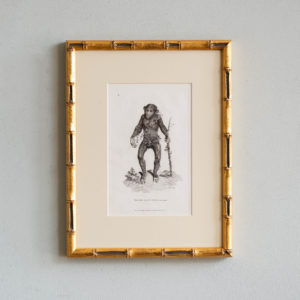
Monkeys – Black Oran-Otan,
£260 EachMonkeys – Black Oran-Otan,
The English Encyclopaedia was published in 1802 by George Kearsley and it gave an unusual insight into early 19th century new discoveries in zoology.£260 Each -
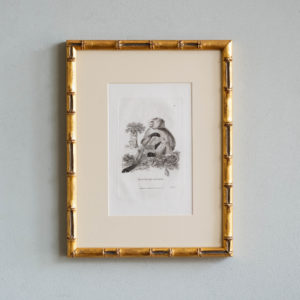
Monkeys – Dog-Faced Baboon,
£260 EachMonkeys – Dog-Faced Baboon,
The English Encyclopaedia was published in 1802 by George Kearsley and it gave an unusual insight into early 19th century new discoveries in zoology.£260 Each -
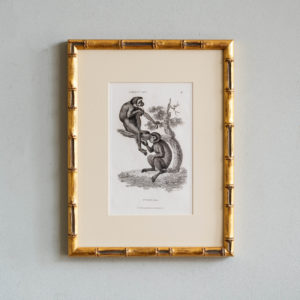
Monkeys – Pygmy Ape, and Alpinus Ape,
£260 EachMonkeys – Pygmy Ape, and Alpinus Ape,
The English Encyclopaedia was published in 1802 by George Kearsley and it gave an unusual insight into early 19th century new discoveries in zoology.£260 Each -
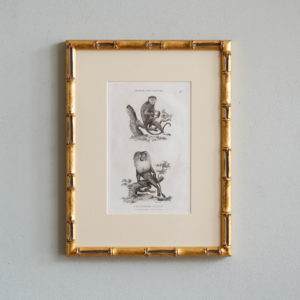
Monkeys – Hare-Lipped Monkey, and Lion-Tailed Monkey,
£260 EachMonkeys – Hare-Lipped Monkey, and Lion-Tailed Monkey,
The English Encyclopaedia was published in 1802 by George Kearsley and it gave an unusual insight into early 19th century new discoveries in zoology.£260 Each -
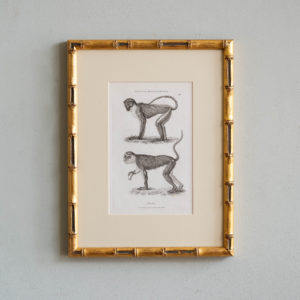
Monkeys – Spotted, or Diana Monkey and Mona,
£260 EachMonkeys – Spotted, or Diana Monkey and Mona,
The English Encyclopaedia was published in 1802 by George Kearsley and it gave an unusual insight into early 19th century new discoveries in zoology.£260 Each -
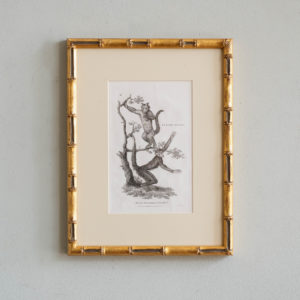
Monkeys – Horned Monkey and Four-Fingered Monkey
£260 EachMonkeys – Horned Monkey and Four-Fingered Monkey
The English Encyclopaedia was published in 1802 by George Kearsley and it gave an unusual insight into early 19th century new discoveries in zoology.£260 Each -
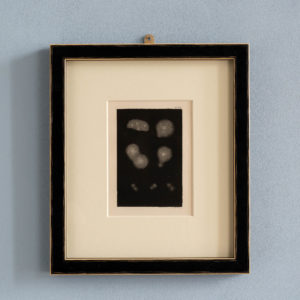
Views of the Architecture of the Heavens, by John Nichol
£250 eachViews of the Architecture of the Heavens, by John Nichol
John Pringle Nichol who, a Scottish Romantic astronomer, educator, and social reformer, who produced popular science books between 1846 and 1850. As the 5th Regius Professor of Astronomy at the University of Edinburgh , influenced the building of a large observatory beyond the city on Horselethill, paid for by the local citizens. In 1841, it was saved from financial collapse by the University. Part of the difficulties had arisen through Nichol's extravagance in purchasing unnecessarily expensive equipment. Eventually, Horselethill Observatory was kept in operation for 100 years. Nichol was a prolific writer and populariser of Astronomy; his books Contemplations on the Solar System and Views of the Architecture of the Heavens, the latter expanding on the Nebular Hypothesis, and one describing the discovery of Neptune£250 each -
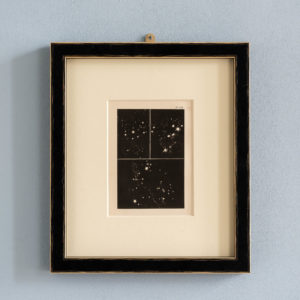
Views of the Architecture of the Heavens, by John Nichol
£250 eachViews of the Architecture of the Heavens, by John Nichol
John Pringle Nichol who, a Scottish Romantic astronomer, educator, and social reformer, who produced popular science books between 1846 and 1850. As the 5th Regius Professor of Astronomy at the University of Edinburgh , influenced the building of a large observatory beyond the city on Horselethill, paid for by the local citizens. In 1841, it was saved from financial collapse by the University. Part of the difficulties had arisen through Nichol's extravagance in purchasing unnecessarily expensive equipment. Eventually, Horselethill Observatory was kept in operation for 100 years. Nichol was a prolific writer and populariser of Astronomy; his books Contemplations on the Solar System and Views of the Architecture of the Heavens, the latter expanding on the Nebular Hypothesis, and one describing the discovery of Neptune£250 each -
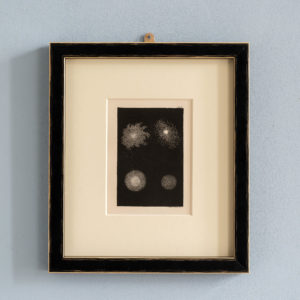
Views of the Architecture of the Heavens, by John Nichol
£250 eachViews of the Architecture of the Heavens, by John Nichol
John Pringle Nichol who, a Scottish Romantic astronomer, educator, and social reformer, who produced popular science books between 1846 and 1850. As the 5th Regius Professor of Astronomy at the University of Edinburgh , influenced the building of a large observatory beyond the city on Horselethill, paid for by the local citizens. In 1841, it was saved from financial collapse by the University. Part of the difficulties had arisen through Nichol's extravagance in purchasing unnecessarily expensive equipment. Eventually, Horselethill Observatory was kept in operation for 100 years. Nichol was a prolific writer and populariser of Astronomy; his books Contemplations on the Solar System and Views of the Architecture of the Heavens, the latter expanding on the Nebular Hypothesis, and one describing the discovery of Neptune£250 each -
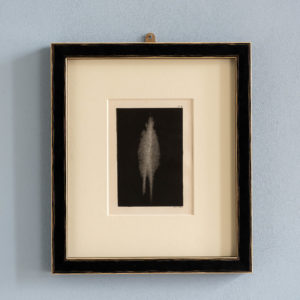
Views of the Architecture of the Heavens, by John Nichol
£250 eachViews of the Architecture of the Heavens, by John Nichol
John Pringle Nichol who, a Scottish Romantic astronomer, educator, and social reformer, who produced popular science books between 1846 and 1850. As the 5th Regius Professor of Astronomy at the University of Edinburgh , influenced the building of a large observatory beyond the city on Horselethill, paid for by the local citizens. In 1841, it was saved from financial collapse by the University. Part of the difficulties had arisen through Nichol's extravagance in purchasing unnecessarily expensive equipment. Eventually, Horselethill Observatory was kept in operation for 100 years. Nichol was a prolific writer and populariser of Astronomy; his books Contemplations on the Solar System and Views of the Architecture of the Heavens, the latter expanding on the Nebular Hypothesis, and one describing the discovery of Neptune£250 each -
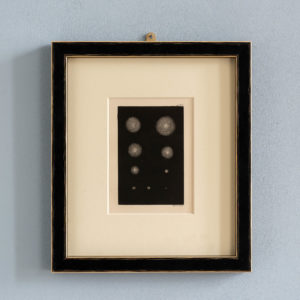
Views of the Architecture of the Heavens, by John Nichol
£250 eachViews of the Architecture of the Heavens, by John Nichol
John Pringle Nichol who, a Scottish Romantic astronomer, educator, and social reformer, who produced popular science books between 1846 and 1850. As the 5th Regius Professor of Astronomy at the University of Edinburgh , influenced the building of a large observatory beyond the city on Horselethill, paid for by the local citizens. In 1841, it was saved from financial collapse by the University. Part of the difficulties had arisen through Nichol's extravagance in purchasing unnecessarily expensive equipment. Eventually, Horselethill Observatory was kept in operation for 100 years. Nichol was a prolific writer and populariser of Astronomy; his books Contemplations on the Solar System and Views of the Architecture of the Heavens, the latter expanding on the Nebular Hypothesis, and one describing the discovery of Neptune£250 each -
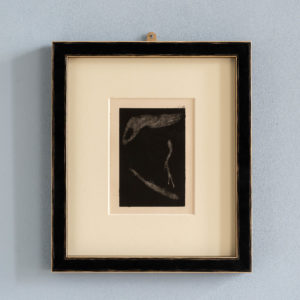
Views of the Architecture of the Heavens, by John Nichol
£250 eachViews of the Architecture of the Heavens, by John Nichol
John Pringle Nichol who, a Scottish Romantic astronomer, educator, and social reformer, who produced popular science books between 1846 and 1850. As the 5th Regius Professor of Astronomy at the University of Edinburgh , influenced the building of a large observatory beyond the city on Horselethill, paid for by the local citizens. In 1841, it was saved from financial collapse by the University. Part of the difficulties had arisen through Nichol's extravagance in purchasing unnecessarily expensive equipment. Eventually, Horselethill Observatory was kept in operation for 100 years. Nichol was a prolific writer and populariser of Astronomy; his books Contemplations on the Solar System and Views of the Architecture of the Heavens, the latter expanding on the Nebular Hypothesis, and one describing the discovery of Neptune£250 each -
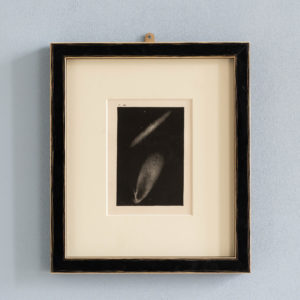
Views of the Architecture of the Heavens, by John Nichol
£250 eachViews of the Architecture of the Heavens, by John Nichol
John Pringle Nichol who, a Scottish Romantic astronomer, educator, and social reformer, who produced popular science books between 1846 and 1850. As the 5th Regius Professor of Astronomy at the University of Edinburgh , influenced the building of a large observatory beyond the city on Horselethill, paid for by the local citizens. In 1841, it was saved from financial collapse by the University. Part of the difficulties had arisen through Nichol's extravagance in purchasing unnecessarily expensive equipment. Eventually, Horselethill Observatory was kept in operation for 100 years. Nichol was a prolific writer and populariser of Astronomy; his books Contemplations on the Solar System and Views of the Architecture of the Heavens, the latter expanding on the Nebular Hypothesis, and one describing the discovery of Neptune£250 each -
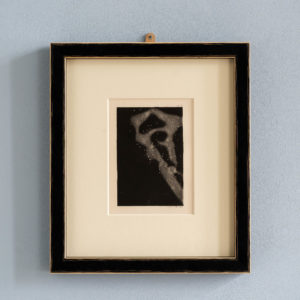
Views of the Architecture of the Heavens, by John Nichol
£250 eachViews of the Architecture of the Heavens, by John Nichol
John Pringle Nichol who, a Scottish Romantic astronomer, educator, and social reformer, who produced popular science books between 1846 and 1850. As the 5th Regius Professor of Astronomy at the University of Edinburgh , influenced the building of a large observatory beyond the city on Horselethill, paid for by the local citizens. In 1841, it was saved from financial collapse by the University. Part of the difficulties had arisen through Nichol's extravagance in purchasing unnecessarily expensive equipment. Eventually, Horselethill Observatory was kept in operation for 100 years. Nichol was a prolific writer and populariser of Astronomy; his books Contemplations on the Solar System and Views of the Architecture of the Heavens, the latter expanding on the Nebular Hypothesis, and one describing the discovery of Neptune£250 each -
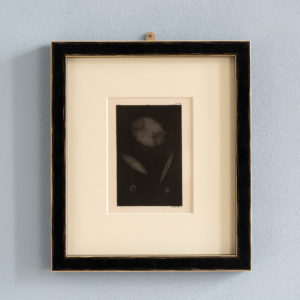
Views of the Architecture of the Heavens, by John Nichol
£250 eachViews of the Architecture of the Heavens, by John Nichol
John Pringle Nichol who, a Scottish Romantic astronomer, educator, and social reformer, who produced popular science books between 1846 and 1850. As the 5th Regius Professor of Astronomy at the University of Edinburgh , influenced the building of a large observatory beyond the city on Horselethill, paid for by the local citizens. In 1841, it was saved from financial collapse by the University. Part of the difficulties had arisen through Nichol's extravagance in purchasing unnecessarily expensive equipment. Eventually, Horselethill Observatory was kept in operation for 100 years. Nichol was a prolific writer and populariser of Astronomy; his books Contemplations on the Solar System and Views of the Architecture of the Heavens, the latter expanding on the Nebular Hypothesis, and one describing the discovery of Neptune£250 each -
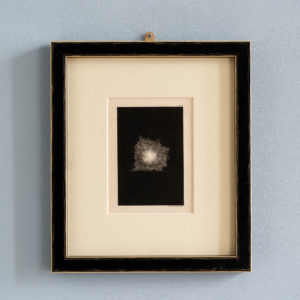
Views of the Architecture of the Heavens, by John Nichol
£250 eachViews of the Architecture of the Heavens, by John Nichol
John Pringle Nichol who, a Scottish Romantic astronomer, educator, and social reformer, who produced popular science books between 1846 and 1850. As the 5th Regius Professor of Astronomy at the University of Edinburgh , influenced the building of a large observatory beyond the city on Horselethill, paid for by the local citizens. In 1841, it was saved from financial collapse by the University. Part of the difficulties had arisen through Nichol's extravagance in purchasing unnecessarily expensive equipment. Eventually, Horselethill Observatory was kept in operation for 100 years. Nichol was a prolific writer and populariser of Astronomy; his books Contemplations on the Solar System and Views of the Architecture of the Heavens, the latter expanding on the Nebular Hypothesis, and one describing the discovery of Neptune£250 each -
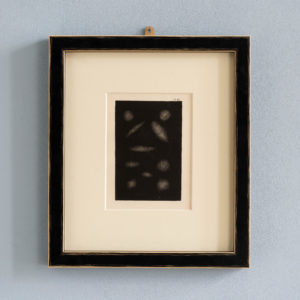
Views of the Architecture of the Heavens, by John Nichol
£250 eachViews of the Architecture of the Heavens, by John Nichol
John Pringle Nichol who, a Scottish Romantic astronomer, educator, and social reformer, who produced popular science books between 1846 and 1850. As the 5th Regius Professor of Astronomy at the University of Edinburgh , influenced the building of a large observatory beyond the city on Horselethill, paid for by the local citizens. In 1841, it was saved from financial collapse by the University. Part of the difficulties had arisen through Nichol's extravagance in purchasing unnecessarily expensive equipment. Eventually, Horselethill Observatory was kept in operation for 100 years. Nichol was a prolific writer and populariser of Astronomy; his books Contemplations on the Solar System and Views of the Architecture of the Heavens, the latter expanding on the Nebular Hypothesis, and one describing the discovery of Neptune£250 each -
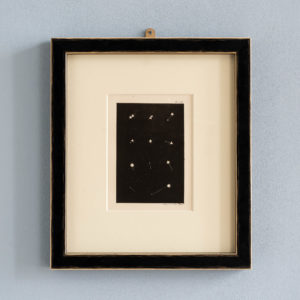
Views of the Architecture of the Heavens, by John Nichol
£250 eachViews of the Architecture of the Heavens, by John Nichol
John Pringle Nichol who, a Scottish Romantic astronomer, educator, and social reformer, who produced popular science books between 1846 and 1850. As the 5th Regius Professor of Astronomy at the University of Edinburgh , influenced the building of a large observatory beyond the city on Horselethill, paid for by the local citizens. In 1841, it was saved from financial collapse by the University. Part of the difficulties had arisen through Nichol's extravagance in purchasing unnecessarily expensive equipment. Eventually, Horselethill Observatory was kept in operation for 100 years. Nichol was a prolific writer and populariser of Astronomy; his books Contemplations on the Solar System and Views of the Architecture of the Heavens, the latter expanding on the Nebular Hypothesis, and one describing the discovery of Neptune£250 each -

Views of the Architecture of the Heavens, by John Nichol
£250 eachViews of the Architecture of the Heavens, by John Nichol
John Pringle Nichol who, a Scottish Romantic astronomer, educator, and social reformer, who produced popular science books between 1846 and 1850. As the 5th Regius Professor of Astronomy at the University of Edinburgh , influenced the building of a large observatory beyond the city on Horselethill, paid for by the local citizens. In 1841, it was saved from financial collapse by the University. Part of the difficulties had arisen through Nichol's extravagance in purchasing unnecessarily expensive equipment. Eventually, Horselethill Observatory was kept in operation for 100 years. Nichol was a prolific writer and populariser of Astronomy; his books Contemplations on the Solar System and Views of the Architecture of the Heavens, the latter expanding on the Nebular Hypothesis, and one describing the discovery of Neptune£250 each -
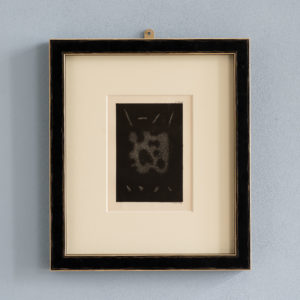
Views of the Architecture of the Heavens, by John Nichol
£250 eachViews of the Architecture of the Heavens, by John Nichol
John Pringle Nichol who, a Scottish Romantic astronomer, educator, and social reformer, who produced popular science books between 1846 and 1850. As the 5th Regius Professor of Astronomy at the University of Edinburgh , influenced the building of a large observatory beyond the city on Horselethill, paid for by the local citizens. In 1841, it was saved from financial collapse by the University. Part of the difficulties had arisen through Nichol's extravagance in purchasing unnecessarily expensive equipment. Eventually, Horselethill Observatory was kept in operation for 100 years. Nichol was a prolific writer and populariser of Astronomy; his books Contemplations on the Solar System and Views of the Architecture of the Heavens, the latter expanding on the Nebular Hypothesis, and one describing the discovery of Neptune£250 each -
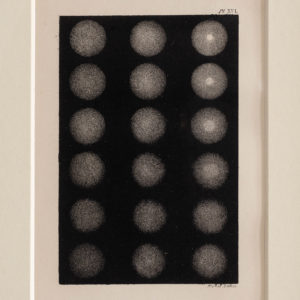
Views of the Architecture of the Heavens, by John Nichol
£250 eachViews of the Architecture of the Heavens, by John Nichol
John Pringle Nichol who, a Scottish Romantic astronomer, educator, and social reformer, who produced popular science books between 1846 and 1850. As the 5th Regius Professor of Astronomy at the University of Edinburgh , influenced the building of a large observatory beyond the city on Horselethill, paid for by the local citizens. In 1841, it was saved from financial collapse by the University. Part of the difficulties had arisen through Nichol's extravagance in purchasing unnecessarily expensive equipment. Eventually, Horselethill Observatory was kept in operation for 100 years. Nichol was a prolific writer and populariser of Astronomy; his books Contemplations on the Solar System and Views of the Architecture of the Heavens, the latter expanding on the Nebular Hypothesis, and one describing the discovery of Neptune£250 each -

Views of the Architecture of the Heavens, by John Nichol
£250 eachViews of the Architecture of the Heavens, by John Nichol
John Pringle Nichol who, a Scottish Romantic astronomer, educator, and social reformer, who produced popular science books between 1846 and 1850. As the 5th Regius Professor of Astronomy at the University of Edinburgh , influenced the building of a large observatory beyond the city on Horselethill, paid for by the local citizens. In 1841, it was saved from financial collapse by the University. Part of the difficulties had arisen through Nichol's extravagance in purchasing unnecessarily expensive equipment. Eventually, Horselethill Observatory was kept in operation for 100 years. Nichol was a prolific writer and populariser of Astronomy; his books Contemplations on the Solar System and Views of the Architecture of the Heavens, the latter expanding on the Nebular Hypothesis, and one describing the discovery of Neptune£250 each -
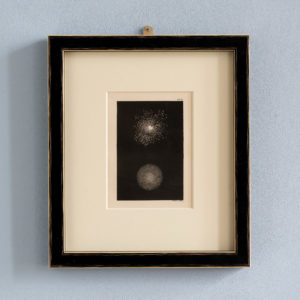
Views of the Architecture of the Heavens, by John Nichol
£250 eachViews of the Architecture of the Heavens, by John Nichol
John Pringle Nichol who, a Scottish Romantic astronomer, educator, and social reformer, who produced popular science books between 1846 and 1850. As the 5th Regius Professor of Astronomy at the University of Edinburgh , influenced the building of a large observatory beyond the city on Horselethill, paid for by the local citizens. In 1841, it was saved from financial collapse by the University. Part of the difficulties had arisen through Nichol's extravagance in purchasing unnecessarily expensive equipment. Eventually, Horselethill Observatory was kept in operation for 100 years. Nichol was a prolific writer and populariser of Astronomy; his books Contemplations on the Solar System and Views of the Architecture of the Heavens, the latter expanding on the Nebular Hypothesis, and one describing the discovery of Neptune£250 each -
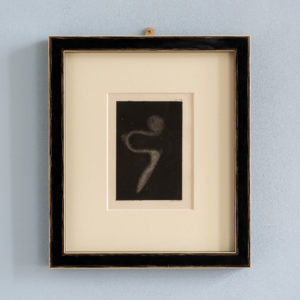
Views of the Architecture of the Heavens, by John Nichol
£250 eachViews of the Architecture of the Heavens, by John Nichol
John Pringle Nichol who, a Scottish Romantic astronomer, educator, and social reformer, who produced popular science books between 1846 and 1850. As the 5th Regius Professor of Astronomy at the University of Edinburgh , influenced the building of a large observatory beyond the city on Horselethill, paid for by the local citizens. In 1841, it was saved from financial collapse by the University. Part of the difficulties had arisen through Nichol's extravagance in purchasing unnecessarily expensive equipment. Eventually, Horselethill Observatory was kept in operation for 100 years. Nichol was a prolific writer and populariser of Astronomy; his books Contemplations on the Solar System and Views of the Architecture of the Heavens, the latter expanding on the Nebular Hypothesis, and one describing the discovery of Neptune£250 each -
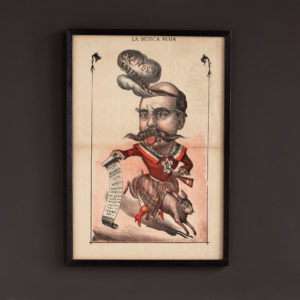
La Mosca Roja, Spanish political poster.
£250La Mosca Roja, Spanish political poster.
A framed Spanish political poster depicting a moustachoied figure, possibly Fransisco Serrano, 1st Duke of La Torre. He is shown dressed in harlequinade and mounted on a white hare proffering a scroll of reactionary and traditionalist demands while dark smoke, containing 'grand hopes' escapes from a breach in his skull. Cannons point out from behind his ears and The Pope is secreted between his eyes. Printed in Barcelona in the 1880s.£250 -

La Mosca Roja, ‘La Caminito de Moscou’
£250La Mosca Roja, ‘La Caminito de Moscou’
A framed chromolithographic Spanish political cartoon of the 1880s showing a heavily armed figure walking through a minefield towards the domes and towers of the Moscow Kremlin with a bag of Seville oranges on his hip. A cloud of disembodied demonic heads are ranged in a wintry sky while the word 'Nihilism' is written in smoke across the heavens. In 1881 Tsar Alexander II had been assassinated in St Petersburg by the Revolutionary Socialist and Nihilist secret society, Zemlya i volya.£250 -
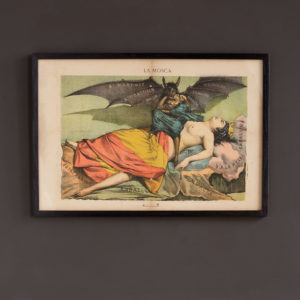
La Mosca
£250La Mosca
A framed Spanish political poster depicting a crowned female figure, draped in the flag of Spain, loomed over by a demonic ghoul.£250 -

Naturalist Rambles on the Devonshire Coast, by Philip Henry Gosse. ‘Johnstonella Catharina’,
£220Naturalist Rambles on the Devonshire Coast, by Philip Henry Gosse. ‘Johnstonella Catharina’,
Living in London, Gosse's prodigious hobby of publishing work on his observations resulted in a breakdown from overwork. He was advised to go and live in the country and moved to Devon in 1853 where he wrote 'A naturalist's rambles on the Devonshire coast' The book successfully popularised the science of marine biology, but his reputation as a serious scientist later suffered with the publication of 'Omphalo' in which he refuted developmental theory, aiming to reconcile geology with the Bible's account of creation.£220 -
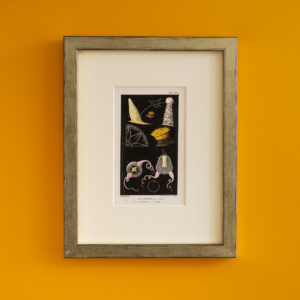
Naturalist Rambles on the Devonshire Coast, by Philip Henry Gosse. ‘Balanophylia Regia, Saphenia Titania’,
£220Naturalist Rambles on the Devonshire Coast, by Philip Henry Gosse. ‘Balanophylia Regia, Saphenia Titania’,
Living in London, Gosse's prodigious hobby of publishing work on his observations resulted in a breakdown from overwork. He was advised to go and live in the country and moved to Devon in 1853 where he wrote 'A naturalist's rambles on the Devonshire coast' The book successfully popularised the science of marine biology, but his reputation as a serious scientist later suffered with the publication of 'Omphalo' in which he refuted developmental theory, aiming to reconcile geology with the Bible's account of creation.£220 -
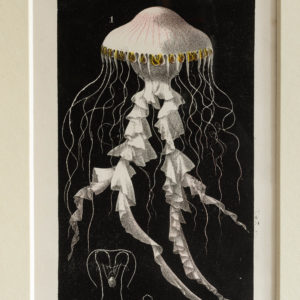
Naturalist Rambles on the Devonshire Coast, by Philip Henry Gosse. ‘Chrysaora Cyclonota’,
£220Naturalist Rambles on the Devonshire Coast, by Philip Henry Gosse. ‘Chrysaora Cyclonota’,
Living in London, Gosse's prodigious hobby of publishing work on his observations resulted in a breakdown from overwork. He was advised to go and live in the country and moved to Devon in 1853 where he wrote 'A naturalist's rambles on the Devonshire coast' The book successfully popularised the science of marine biology, but his reputation as a serious scientist later suffered with the publication of 'Omphalo' in which he refuted developmental theory, aiming to reconcile geology with the Bible's account of creation.£220 -
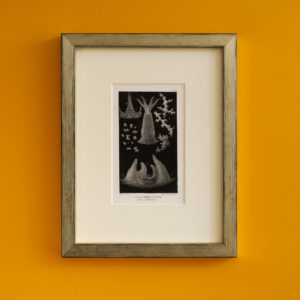
Naturalist Rambles on the Devonshire Coast, by Philip Henry Gosse. ‘Alcyonium Digitatum, Eye of Parten’,
£220Naturalist Rambles on the Devonshire Coast, by Philip Henry Gosse. ‘Alcyonium Digitatum, Eye of Parten’,
Living in London, Gosse's prodigious hobby of publishing work on his observations resulted in a breakdown from overwork. He was advised to go and live in the country and moved to Devon in 1853 where he wrote 'A naturalist's rambles on the Devonshire coast' The book successfully popularised the science of marine biology, but his reputation as a serious scientist later suffered with the publication of 'Omphalo' in which he refuted developmental theory, aiming to reconcile geology with the Bible's account of creation.£220 -
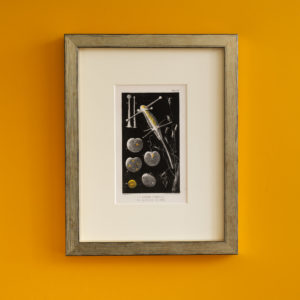
Naturalist Rambles on the Devonshire Coast, by Philip Henry Gosse. ‘Coryne Staurdial, Noctiluca Miliaris’,’,
£220Naturalist Rambles on the Devonshire Coast, by Philip Henry Gosse. ‘Coryne Staurdial, Noctiluca Miliaris’,’,
Living in London, Gosse's prodigious hobby of publishing work on his observations resulted in a breakdown from overwork. He was advised to go and live in the country and moved to Devon in 1853 where he wrote 'A naturalist's rambles on the Devonshire coast' The book successfully popularised the science of marine biology, but his reputation as a serious scientist later suffered with the publication of 'Omphalo' in which he refuted developmental theory, aiming to reconcile geology with the Bible's account of creation.£220 -
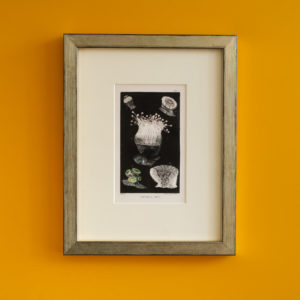
Naturalist Rambles on the Devonshire Coast, by Philip Henry Gosse. ‘Caryophyllia Smithii’,
£220Naturalist Rambles on the Devonshire Coast, by Philip Henry Gosse. ‘Caryophyllia Smithii’,
Living in London, Gosse's prodigious hobby of publishing work on his observations resulted in a breakdown from overwork. He was advised to go and live in the country and moved to Devon in 1853 where he wrote 'A naturalist's rambles on the Devonshire coast' The book successfully popularised the science of marine biology, but his reputation as a serious scientist later suffered with the publication of 'Omphalo' in which he refuted developmental theory, aiming to reconcile geology with the Bible's account of creation.£220 -
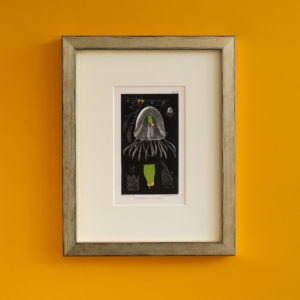
Naturalist Rambles on the Devonshire Coast, by Philip Henry Gosse. Thaumantias Corynetes,
£220Naturalist Rambles on the Devonshire Coast, by Philip Henry Gosse. Thaumantias Corynetes,
Living in London, Gosse's prodigious hobby of publishing work on his observations resulted in a breakdown from overwork. He was advised to go and live in the country and moved to Devon in 1853 where he wrote 'A naturalist's rambles on the Devonshire coast' The book successfully popularised the science of marine biology, but his reputation as a serious scientist later suffered with the publication of 'Omphalo' in which he refuted developmental theory, aiming to reconcile geology with the Bible's account of creation.£220 -
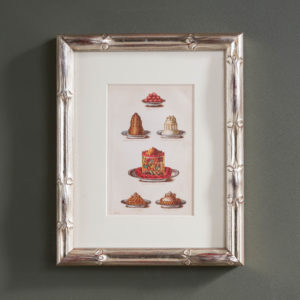
Mrs Beeton, original chromolithographs
£195 eachMrs Beeton, original chromolithographs
Isabella Mary Beeton was an English journalist, editor and writer. In 1859 with her husband, Mrs Beeton launched a series of 48-page monthly supplements to The Englishwoman's Domestic Magazine; the 24 instalments were published in one volume as Mrs Beeton's Book of Household Management.£195 each -
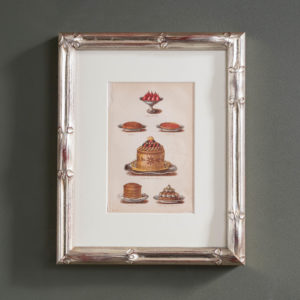
Mrs Beeton, original chromolithographs
£195 eachMrs Beeton, original chromolithographs
Isabella Mary Beeton was an English journalist, editor and writer. In 1859 with her husband, Mrs Beeton launched a series of 48-page monthly supplements to The Englishwoman's Domestic Magazine; the 24 instalments were published in one volume as Mrs Beeton's Book of Household Management.£195 each -
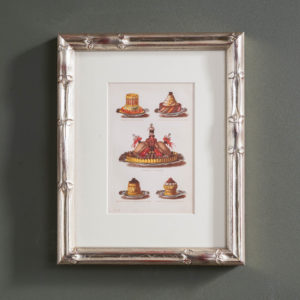
Mrs Beeton, original chromolithographs
£195 eachMrs Beeton, original chromolithographs
Isabella Mary Beeton was an English journalist, editor and writer. In 1859 with her husband, Mrs Beeton launched a series of 48-page monthly supplements to The Englishwoman's Domestic Magazine; the 24 instalments were published in one volume as Mrs Beeton's Book of Household Management.£195 each -
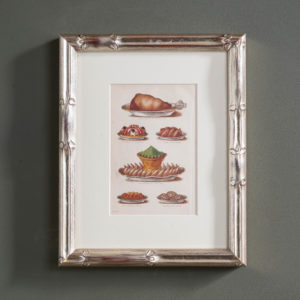
Mrs Beeton, original chromolithographs
£195 eachMrs Beeton, original chromolithographs
Isabella Mary Beeton was an English journalist, editor and writer. In 1859 the with her husband Mrs Beeton launched a series of 48-page monthly supplements to The Englishwoman's Domestic Magazine; the 24 instalments were published in one volume as Mrs Beeton's Book of Household Management.£195 each -
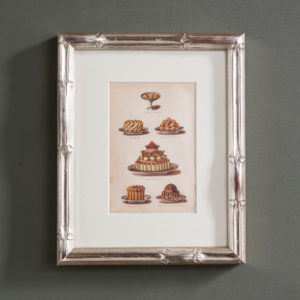
Mrs Beeton, original chromolithographs
£195 eachMrs Beeton, original chromolithographs
Isabella Mary Beeton was an English journalist, editor and writer. In 1859 with her husband, Mrs Beeton launched a series of 48-page monthly supplements to The Englishwoman's Domestic Magazine; the 24 instalments were published in one volume as Mrs Beeton's Book of Household Management.£195 each -
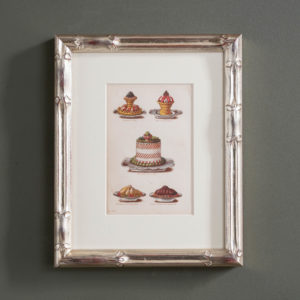
Mrs Beeton, original chromolithographs
£195 eachMrs Beeton, original chromolithographs
Isabella Mary Beeton was an English journalist, editor and writer. In 1859 with her husband, Mrs Beeton launched a series of 48-page monthly supplements to The Englishwoman's Domestic Magazine; the 24 instalments were published in one volume as Mrs Beeton's Book of Household Management.£195 each -
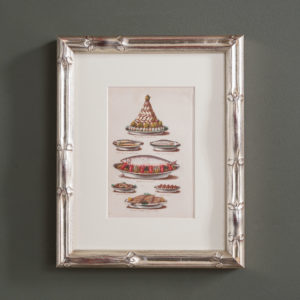
Mrs Beeton, original chromolithographs
£195 eachMrs Beeton, original chromolithographs
Isabella Mary Beeton was an English journalist, editor and writer. In 1859 with her husband, Mrs Beeton launched a series of 48-page monthly supplements to The Englishwoman's Domestic Magazine; the 24 instalments were published in one volume as Mrs Beeton's Book of Household Management.£195 each -

Mrs Beeton, original chromolithographs
£195 eachMrs Beeton, original chromolithographs
Isabella Mary Beeton was an English journalist, editor and writer. In 1859 with her husband, Mrs Beeton launched a series of 48-page monthly supplements to The Englishwoman's Domestic Magazine; the 24 instalments were published in one volume as Mrs Beeton's Book of Household Management.£195 each -
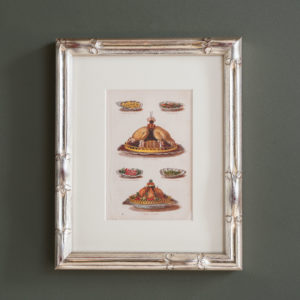
Mrs Beeton, original chromolithographs
£195 eachMrs Beeton, original chromolithographs
Isabella Mary Beeton was an English journalist, editor and writer. In 1859 with her husband, Mrs Beeton launched a series of 48-page monthly supplements to The Englishwoman's Domestic Magazine; the 24 instalments were published in one volume as Mrs Beeton's Book of Household Management.£195 each -
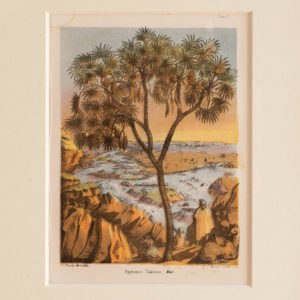
Popular History of the Palms and their Allies – Hyphaene Thebaica
£180 eachPopular History of the Palms and their Allies – Hyphaene Thebaica
Based on the work of Berthold Seemann ,was a botanist who made his name when he was appointed naturalist (on the recommendation of W J Hooker) to HMS Herald for the Kellett voyage of exploration to the American West Coast and Pacific.£180 each -
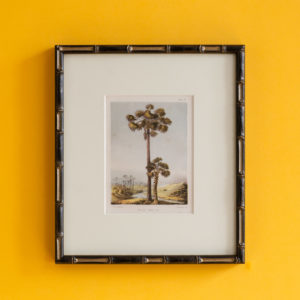
Popular History of the Palms and their Allies – Mauritia vinifera
£180 eachPopular History of the Palms and their Allies – Mauritia vinifera
Based on the work of Berthold Seemann ,was a botanist who made his name when he was appointed naturalist (on the recommendation of W J Hooker) to HMS Herald for the Kellett voyage of exploration to the American West Coast and Pacific.£180 each -
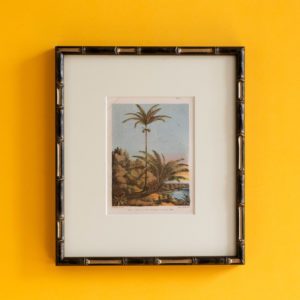
Popular History of the Palms and their Allies – Elaeis melanococca & Iriartea exorrhiza
£180 eachPopular History of the Palms and their Allies – Elaeis melanococca & Iriartea exorrhiza
Based on the work of Berthold Seemann ,was a botanist who made his name when he was appointed naturalist (on the recommendation of W J Hooker) to HMS Herald for the Kellett voyage of exploration to the American West Coast and Pacific.£180 each -
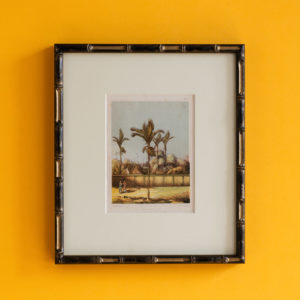
Popular History of the Palms and their Allies – Areca catechu
£180 eachPopular History of the Palms and their Allies – Areca catechu
Based on the work of Berthold Seemann ,was a botanist who made his name when he was appointed naturalist (on the recommendation of W J Hooker) to HMS Herald for the Kellett voyage of exploration to the American West Coast and Pacific.£180 each -

Popular History of the Palms and their Allies – Acrocomia Mexicana & Chamaedorea Schiedeana
£180 eachPopular History of the Palms and their Allies – Acrocomia Mexicana & Chamaedorea Schiedeana
Based on the work of Berthold Seemann ,was a botanist who made his name when he was appointed naturalist (on the recommendation of W J Hooker) to HMS Herald for the Kellett voyage of exploration to the American West Coast and Pacific.£180 each -
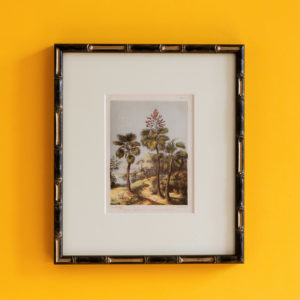
Popular History of the Palms and their Allies – Borassus flabelliformis & Corypha umbraculifera
£180 eachPopular History of the Palms and their Allies – Borassus flabelliformis & Corypha umbraculifera
Based on the work of Berthold Seemann ,was a botanist who made his name when he was appointed naturalist (on the recommendation of W J Hooker) to HMS Herald for the Kellett voyage of exploration to the American West Coast and Pacific.£180 each -
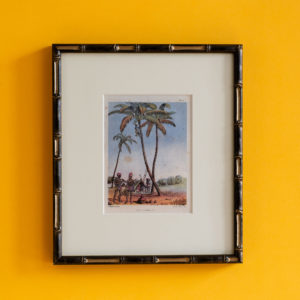
Popular History of the Palms and their Allies – Cocos nucifera
£180 eachPopular History of the Palms and their Allies – Cocos nucifera
Based on the work of Berthold Seemann ,was a botanist who made his name when he was appointed naturalist (on the recommendation of W J Hooker) to HMS Herald for the Kellett voyage of exploration to the American West Coast and Pacific.£180 each -
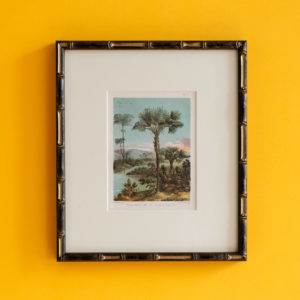
Popular History of the Palms and their Allies – Oreodoxa oleracea & Thrinax multiflora
£180 eachPopular History of the Palms and their Allies – Oreodoxa oleracea & Thrinax multiflora
Based on the work of Berthold Seemann ,was a botanist who made his name when he was appointed naturalist (on the recommendation of W J Hooker) to HMS Herald for the Kellett voyage of exploration to the American West Coast and Pacific.£180 each -
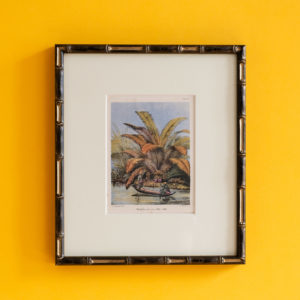
Popular History of the Palms and their Allies – Phytelephas macrocarpa
£180 eachPopular History of the Palms and their Allies – Phytelephas macrocarpa
Based on the work of Berthold Seemann ,was a botanist who made his name when he was appointed naturalist (on the recommendation of W J Hooker) to HMS Herald for the Kellett voyage of exploration to the American West Coast and Pacific.£180 each -
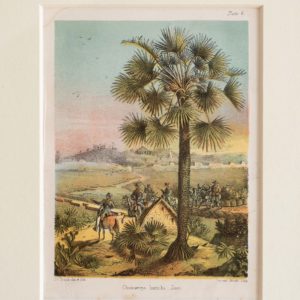
Popular History of the Palms and their Allies – Chamaerops humilis
£180 eachPopular History of the Palms and their Allies – Chamaerops humilis
Based on the work of Berthold Seemann ,was a botanist who made his name when he was appointed naturalist (on the recommendation of W J Hooker) to HMS Herald for the Kellett voyage of exploration to the American West Coast and Pacific.£180 each -
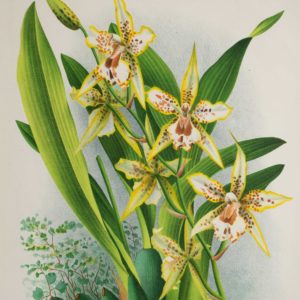
Linden Botanicals, Odontoglossum Duvivieranum,
£175 eachLinden Botanicals, Odontoglossum Duvivieranum,
L’Illustration Horticole, was a monthly horticultural review, founded in 1854 in Ghent, Belgium, by Ambroise Verschaffelt, a nurseryman who specialised in new plant introductions from South America. The lavish illustrations were produced by some of the very best botanical artists and lithographers – A. Goosens, P. De Pannemaeker and J. Goffart. The L’Illustration Horticole although founded by Jean Jules Linden (1817 – 1898) became a collaborative effort of many great horticulturists and field botanists of the day. Jean Linden in his own right was a renowned orchid grower and collector. Each monthly edition featured chromolithograph of botanical prints. Plants such as orchids, camellias, roses and leafy plants such as ferns and palm trees were represented. The magazine’s scope included pictures, descriptions, the history and culture of “the most remarkable plants,” new introductions, horticultural history, botanical expeditions, and accounts of the major expositions and of new works on botany and horticulture as well as garden descriptions and layouts.£175 each -
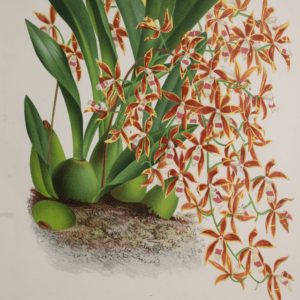
Linden Botanicals, Odontoglossum Constricutum,
£175 eachLinden Botanicals, Odontoglossum Constricutum,
L’Illustration Horticole, was a monthly horticultural review, founded in 1854 in Ghent, Belgium, by Ambroise Verschaffelt, a nurseryman who specialised in new plant introductions from South America. The lavish illustrations were produced by some of the very best botanical artists and lithographers – A. Goosens, P. De Pannemaeker and J. Goffart. The L’Illustration Horticole although founded by Jean Jules Linden (1817 – 1898) became a collaborative effort of many great horticulturists and field botanists of the day. Jean Linden in his own right was a renowned orchid grower and collector. Each monthly edition featured chromolithograph of botanical prints. Plants such as orchids, camellias, roses and leafy plants such as ferns and palm trees were represented. The magazine’s scope included pictures, descriptions, the history and culture of “the most remarkable plants,” new introductions, horticultural history, botanical expeditions, and accounts of the major expositions and of new works on botany and horticulture as well as garden descriptions and layouts.£175 each -
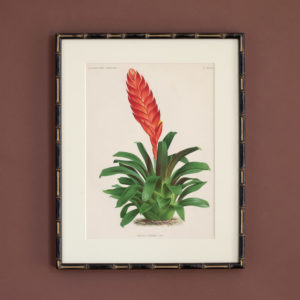
Linden Botanicals, Vriesea Fulgida,
£175 eachLinden Botanicals, Vriesea Fulgida,
L’Illustration Horticole, was a monthly horticultural review, founded in 1854 in Ghent, Belgium, by Ambroise Verschaffelt, a nurseryman who specialised in new plant introductions from South America. The lavish illustrations were produced by some of the very best botanical artists and lithographers – A. Goosens, P. De Pannemaeker and J. Goffart. The L’Illustration Horticole although founded by Jean Jules Linden (1817 – 1898) became a collaborative effort of many great horticulturists and field botanists of the day. Jean Linden in his own right was a renowned orchid grower and collector. Each monthly edition featured chromolithograph of botanical prints. Plants such as orchids, camellias, roses and leafy plants such as ferns and palm trees were represented. The magazine’s scope included pictures, descriptions, the history and culture of “the most remarkable plants,” new introductions, horticultural history, botanical expeditions, and accounts of the major expositions and of new works on botany and horticulture as well as garden descriptions and layouts.£175 each -
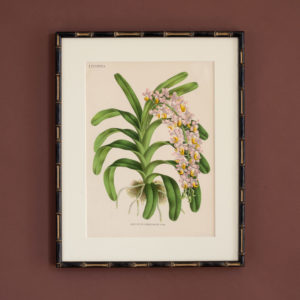
Linden Botanicals, Aerides Reichenbachi,
£175 eachLinden Botanicals, Aerides Reichenbachi,
L’Illustration Horticole, was a monthly horticultural review, founded in 1854 in Ghent, Belgium, by Ambroise Verschaffelt, a nurseryman who specialised in new plant introductions from South America. The lavish illustrations were produced by some of the very best botanical artists and lithographers – A. Goosens, P. De Pannemaeker and J. Goffart. The L’Illustration Horticole although founded by Jean Jules Linden (1817 – 1898) became a collaborative effort of many great horticulturists and field botanists of the day. Jean Linden in his own right was a renowned orchid grower and collector. Each monthly edition featured chromolithograph of botanical prints. Plants such as orchids, camellias, roses and leafy plants such as ferns and palm trees were represented. The magazine’s scope included pictures, descriptions, the history and culture of “the most remarkable plants,” new introductions, horticultural history, botanical expeditions, and accounts of the major expositions and of new works on botany and horticulture as well as garden descriptions and layouts.£175 each -
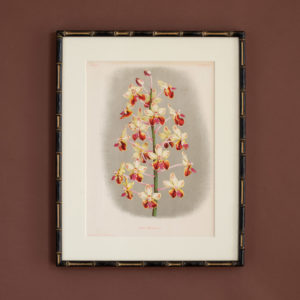
Linden Botanicals, Vanda Superba,
£175 eachLinden Botanicals, Vanda Superba,
L’Illustration Horticole, was a monthly horticultural review, founded in 1854 in Ghent, Belgium, by Ambroise Verschaffelt, a nurseryman who specialised in new plant introductions from South America. The lavish illustrations were produced by some of the very best botanical artists and lithographers – A. Goosens, P. De Pannemaeker and J. Goffart. The L’Illustration Horticole although founded by Jean Jules Linden (1817 – 1898) became a collaborative effort of many great horticulturists and field botanists of the day. Jean Linden in his own right was a renowned orchid grower and collector. Each monthly edition featured chromolithograph of botanical prints. Plants such as orchids, camellias, roses and leafy plants such as ferns and palm trees were represented. The magazine’s scope included pictures, descriptions, the history and culture of “the most remarkable plants,” new introductions, horticultural history, botanical expeditions, and accounts of the major expositions and of new works on botany and horticulture as well as garden descriptions and layouts.£175 each -
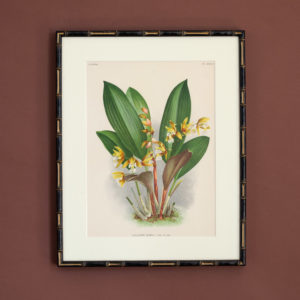
Linden Botanicals, Coelogyne Lurida,
£175 eachLinden Botanicals, Coelogyne Lurida,
L’Illustration Horticole, was a monthly horticultural review, founded in 1854 in Ghent, Belgium, by Ambroise Verschaffelt, a nurseryman who specialised in new plant introductions from South America. The lavish illustrations were produced by some of the very best botanical artists and lithographers – A. Goosens, P. De Pannemaeker and J. Goffart. The L’Illustration Horticole although founded by Jean Jules Linden (1817 – 1898) became a collaborative effort of many great horticulturists and field botanists of the day. Jean Linden in his own right was a renowned orchid grower and collector. Each monthly edition featured chromolithograph of botanical prints. Plants such as orchids, camellias, roses and leafy plants such as ferns and palm trees were represented. The magazine’s scope included pictures, descriptions, the history and culture of “the most remarkable plants,” new introductions, horticultural history, botanical expeditions, and accounts of the major expositions and of new works on botany and horticulture as well as garden descriptions and layouts.£175 each -
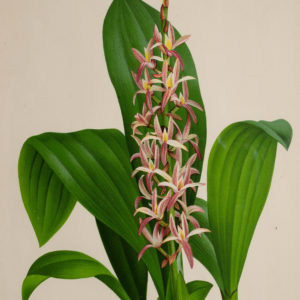
Linden Botanicals, Eria Striolata,
£175 eachLinden Botanicals, Eria Striolata,
L’Illustration Horticole, was a monthly horticultural review, founded in 1854 in Ghent, Belgium, by Ambroise Verschaffelt, a nurseryman who specialised in new plant introductions from South America. The lavish illustrations were produced by some of the very best botanical artists and lithographers – A. Goosens, P. De Pannemaeker and J. Goffart. The L’Illustration Horticole although founded by Jean Jules Linden (1817 – 1898) became a collaborative effort of many great horticulturists and field botanists of the day. Jean Linden in his own right was a renowned orchid grower and collector. Each monthly edition featured chromolithograph of botanical prints. Plants such as orchids, camellias, roses and leafy plants such as ferns and palm trees were represented. The magazine’s scope included pictures, descriptions, the history and culture of “the most remarkable plants,” new introductions, horticultural history, botanical expeditions, and accounts of the major expositions and of new works on botany and horticulture as well as garden descriptions and layouts.£175 each -
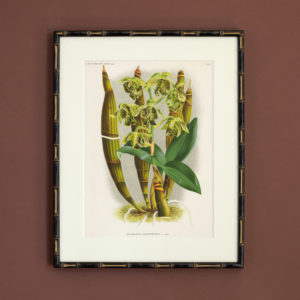
Linden Botanicals, Dendiobium Macrophyllum,
£175 eachLinden Botanicals, Dendiobium Macrophyllum,
L’Illustration Horticole, was a monthly horticultural review, founded in 1854 in Ghent, Belgium, by Ambroise Verschaffelt, a nurseryman who specialised in new plant introductions from South America. The lavish illustrations were produced by some of the very best botanical artists and lithographers – A. Goosens, P. De Pannemaeker and J. Goffart. The L’Illustration Horticole although founded by Jean Jules Linden (1817 – 1898) became a collaborative effort of many great horticulturists and field botanists of the day. Jean Linden in his own right was a renowned orchid grower and collector. Each monthly edition featured chromolithograph of botanical prints. Plants such as orchids, camellias, roses and leafy plants such as ferns and palm trees were represented. The magazine’s scope included pictures, descriptions, the history and culture of “the most remarkable plants,” new introductions, horticultural history, botanical expeditions, and accounts of the major expositions and of new works on botany and horticulture as well as garden descriptions and layouts.£175 each -
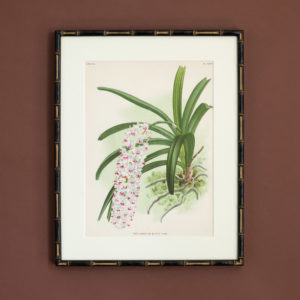
Linden Botanicals, Rhynchostylis Retusa,
£175 eachLinden Botanicals, Rhynchostylis Retusa,
L’Illustration Horticole, was a monthly horticultural review, founded in 1854 in Ghent, Belgium, by Ambroise Verschaffelt, a nurseryman who specialised in new plant introductions from South America. The lavish illustrations were produced by some of the very best botanical artists and lithographers – A. Goosens, P. De Pannemaeker and J. Goffart. The L’Illustration Horticole although founded by Jean Jules Linden (1817 – 1898) became a collaborative effort of many great horticulturists and field botanists of the day. Jean Linden in his own right was a renowned orchid grower and collector. Each monthly edition featured chromolithograph of botanical prints. Plants such as orchids, camellias, roses and leafy plants such as ferns and palm trees were represented. The magazine’s scope included pictures, descriptions, the history and culture of “the most remarkable plants,” new introductions, horticultural history, botanical expeditions, and accounts of the major expositions and of new works on botany and horticulture as well as garden descriptions and layouts.£175 each -
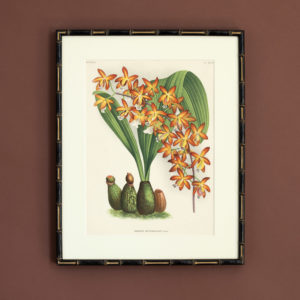
Linden Botanicals, Eriopsis Rutidobulbon,
£175 eachLinden Botanicals, Eriopsis Rutidobulbon,
L’Illustration Horticole, was a monthly horticultural review, founded in 1854 in Ghent, Belgium, by Ambroise Verschaffelt, a nurseryman who specialised in new plant introductions from South America. The lavish illustrations were produced by some of the very best botanical artists and lithographers – A. Goosens, P. De Pannemaeker and J. Goffart. The L’Illustration Horticole although founded by Jean Jules Linden (1817 – 1898) became a collaborative effort of many great horticulturists and field botanists of the day. Jean Linden in his own right was a renowned orchid grower and collector. Each monthly edition featured chromolithograph of botanical prints. Plants such as orchids, camellias, roses and leafy plants such as ferns and palm trees were represented. The magazine’s scope included pictures, descriptions, the history and culture of “the most remarkable plants,” new introductions, horticultural history, botanical expeditions, and accounts of the major expositions and of new works on botany and horticulture as well as garden descriptions and layouts.£175 each -
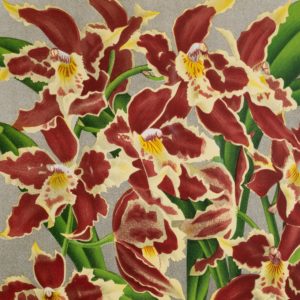
Linden Botanicals, Odontoglossum Crispum,
£175 eachLinden Botanicals, Odontoglossum Crispum,
L’Illustration Horticole, was a monthly horticultural review, founded in 1854 in Ghent, Belgium, by Ambroise Verschaffelt, a nurseryman who specialised in new plant introductions from South America. The lavish illustrations were produced by some of the very best botanical artists and lithographers – A. Goosens, P. De Pannemaeker and J. Goffart. The L’Illustration Horticole although founded by Jean Jules Linden (1817 – 1898) became a collaborative effort of many great horticulturists and field botanists of the day. Jean Linden in his own right was a renowned orchid grower and collector. Each monthly edition featured chromolithograph of botanical prints. Plants such as orchids, camellias, roses and leafy plants such as ferns and palm trees were represented. The magazine’s scope included pictures, descriptions, the history and culture of “the most remarkable plants,” new introductions, horticultural history, botanical expeditions, and accounts of the major expositions and of new works on botany and horticulture as well as garden descriptions and layouts.£175 each -
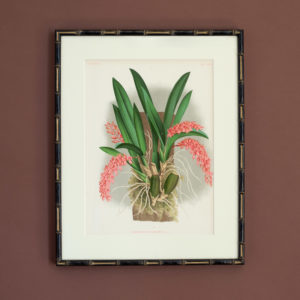
Linden Botanicals, Rodriguezia Bungerothi,
£175 eachLinden Botanicals, Rodriguezia Bungerothi,
L’Illustration Horticole, was a monthly horticultural review, founded in 1854 in Ghent, Belgium, by Ambroise Verschaffelt, a nurseryman who specialised in new plant introductions from South America. The lavish illustrations were produced by some of the very best botanical artists and lithographers – A. Goosens, P. De Pannemaeker and J. Goffart. The L’Illustration Horticole although founded by Jean Jules Linden (1817 – 1898) became a collaborative effort of many great horticulturists and field botanists of the day. Jean Linden in his own right was a renowned orchid grower and collector. Each monthly edition featured chromolithograph of botanical prints. Plants such as orchids, camellias, roses and leafy plants such as ferns and palm trees were represented. The magazine’s scope included pictures, descriptions, the history and culture of “the most remarkable plants,” new introductions, horticultural history, botanical expeditions, and accounts of the major expositions and of new works on botany and horticulture as well as garden descriptions and layouts.£175 each -
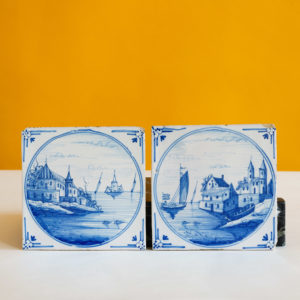
Two Good Blue and White Delft tiles,
£150 the pairTwo Good Blue and White Delft tiles,
The nineteenth century tiles typical in their blue and white decoration are executed with more detail than is usually seen on such tiles. Both having scenes that incorporate seascapes, boats, churches and harbours with slipways. Both painted within roundels with angular decoration to each corner.£150 the pair -

Nineteenth century arboreal prints,
£140 eachNineteenth century arboreal prints,
European trees published in London c1880. Mounted in cream framed in pale gold. 'Hawthorn'£140 each -
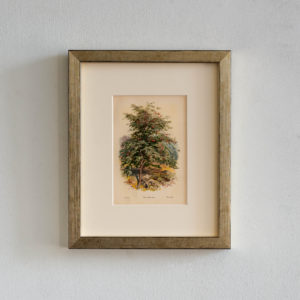
Nineteenth century arboreal prints,
£140 eachNineteenth century arboreal prints,
European trees published c1880. Mounted in cream framed in pale gold. 'Mountain Ash'£140 each -
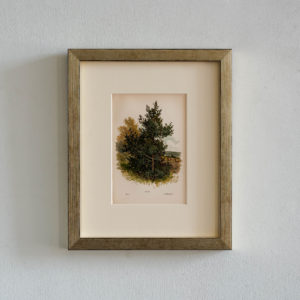
Nineteenth century arboreal prints,
£140 eachNineteenth century arboreal prints,
European trees published c1880. Mounted in cream framed in pale gold. 'Holly'.£140 each -
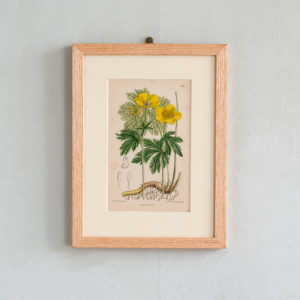
Curtis’s Botanical Lithographs,
£140 eachCurtis’s Botanical Lithographs,
Printed by L. Reeve and Co. of Covent Garden. Framed in natural oak.£140 each
Featured Items
-
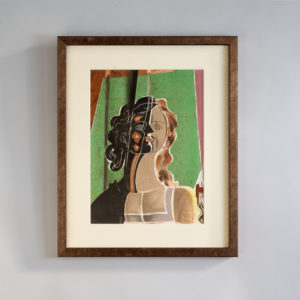
Figure by Georges Braque, Verve Vol 2 / No. 5-6.
£800Figure by Georges Braque, Verve Vol 2 / No. 5-6.
The Verve Review was a purposefully luxurious. It ran from 1937 to 1960, but with only 38 editions available, due to the high degree of design and editorial work dedicated to each issue. Each edition contained unique lithographic prints, commissioned by the editor, and each cover a double-page lithograph elaborated by one of the artists contained within. It was the brainchild of its editor Stratis Eleftheriades, a Greek National who moved to Paris in the early thirties to take part in the growing Modernist movement, writing under the name of Teriade.£800 -
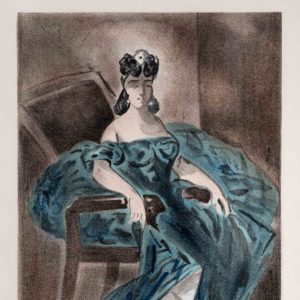
Portraits Part I by Constantin Guys, Verve Vol 2 / No. 5-6.
£500Portraits Part I by Constantin Guys, Verve Vol 2 / No. 5-6.
The Verve Review was a purposefully luxurious. It ran from 1937 to 1960, but with only 38 editions available, due to the high degree of design and editorial work dedicated to each issue. Each edition contained unique lithographic prints, commissioned by the editor, and each cover a double-page lithograph elaborated by one of the artists contained within. It was the brainchild of its editor Stratis Eleftheriades, a Greek National who moved to Paris in the early thirties to take part in the growing Modernist movement, writing under the name of Teriade.£500 -

The Dance, by Henri Matisse, Jan – March 1939 / No. 4.
£1,200The Dance, by Henri Matisse, Jan – March 1939 / No. 4.
The Verve Review was a purposefully luxurious. It ran from 1937 to 1960, but with only 38 editions available, due to the high degree of design and editorial work dedicated to each issue. Each edition contained unique lithographic prints, commissioned by the editor, and each cover a double-page lithograph elaborated by one of the artists contained within. It was the brainchild of its editor Stratis Eleftheriades, a Greek National who moved to Paris in the early thirties to take part in the growing Modernist movement, writing under the name of Teriade.£1,200 -
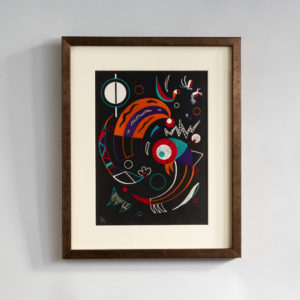
Comets by Wassily Kandinsky, Verve Vol. 1 / No. 2.
£800Comets by Wassily Kandinsky, Verve Vol. 1 / No. 2.
The Verve Review was a purposefully luxurious. It ran from 1937 to 1960, but with only 38 editions available, due to the high degree of design and editorial work dedicated to each issue. Each edition contained unique lithographic prints, commissioned by the editor, and each cover a double-page lithograph elaborated by one of the artists contained within. It was the brainchild of its editor Stratis Eleftheriades, a Greek National who moved to Paris in the early thirties to take part in the growing Modernist movement, writing under the name of Teriade.£800

